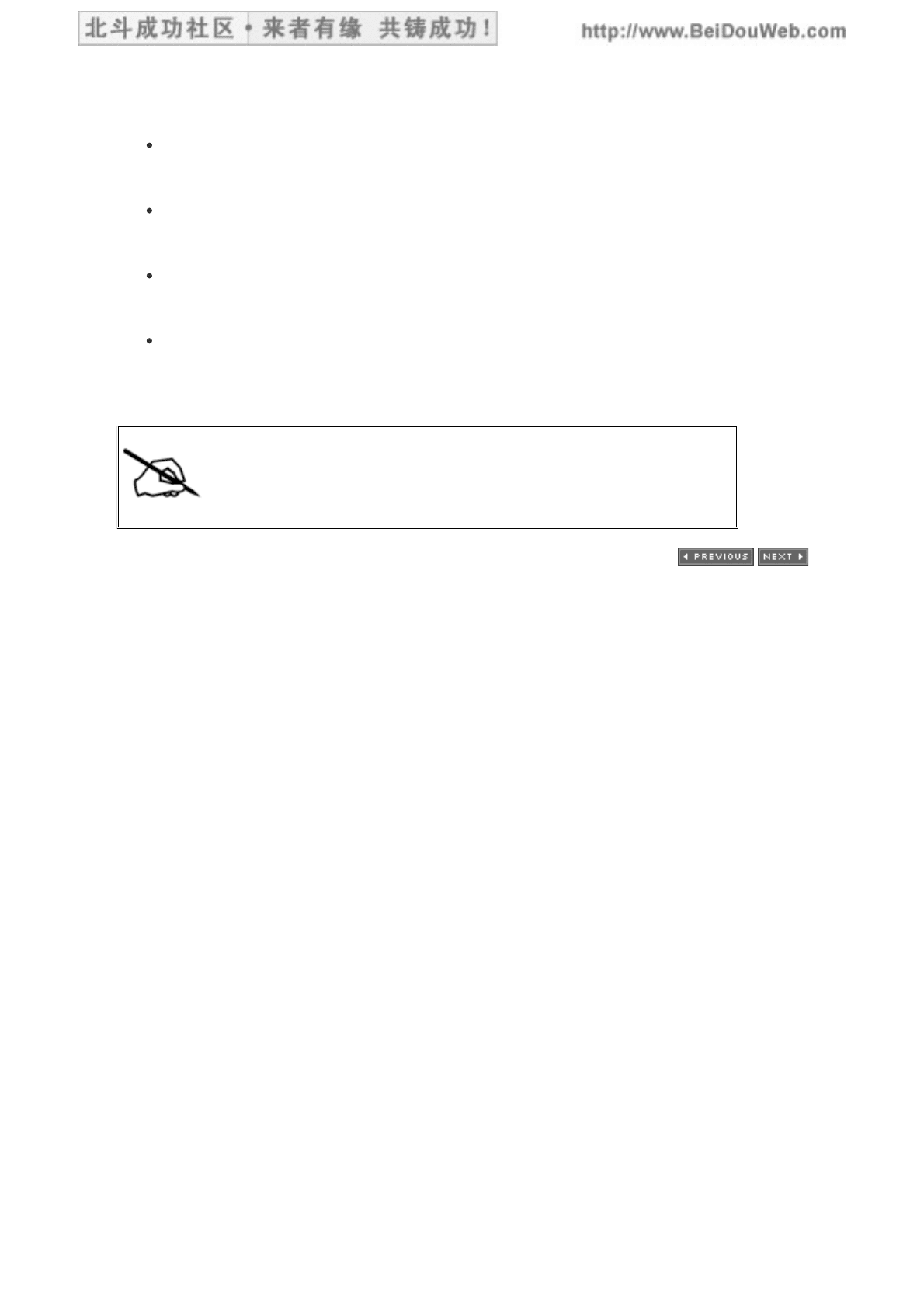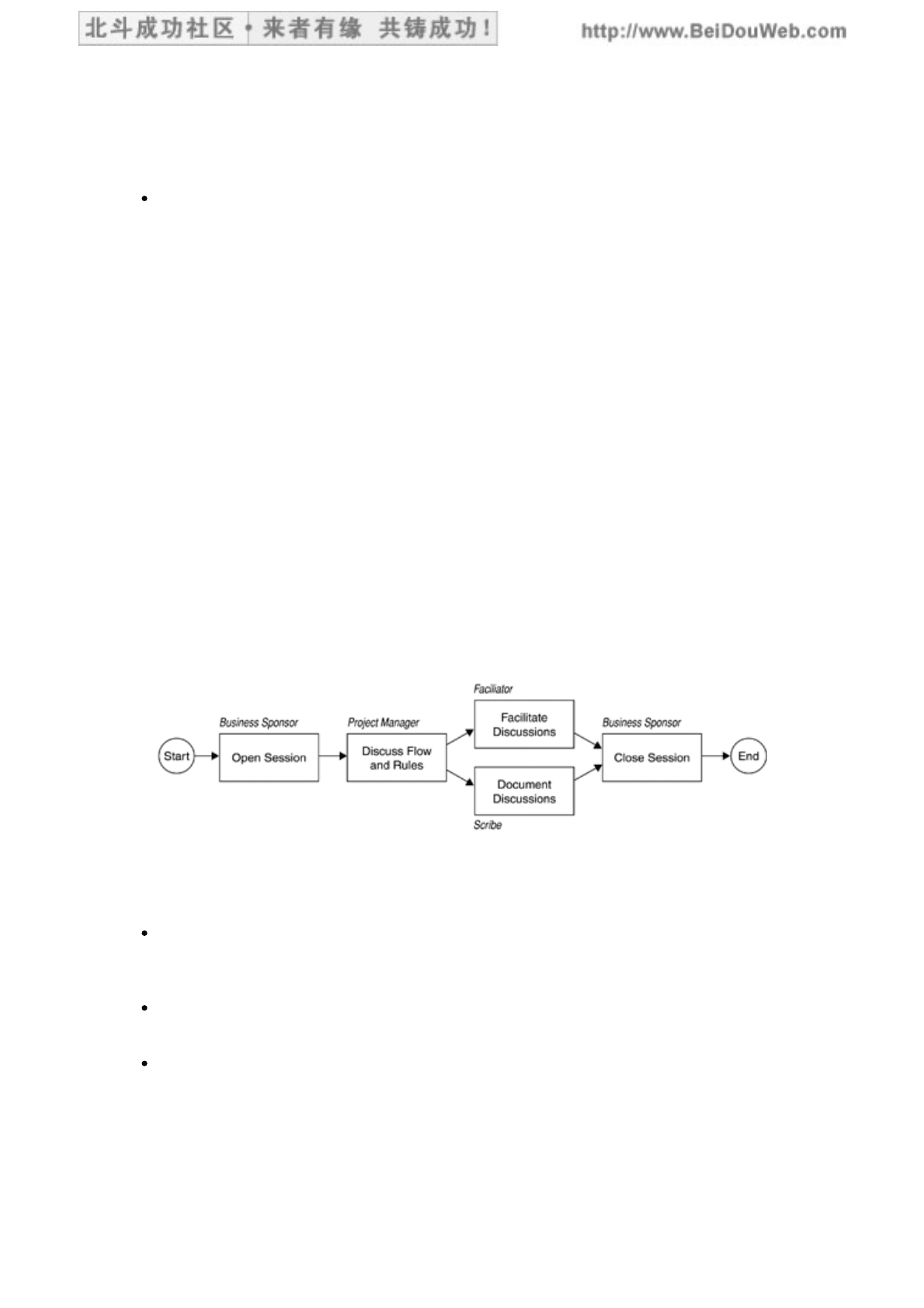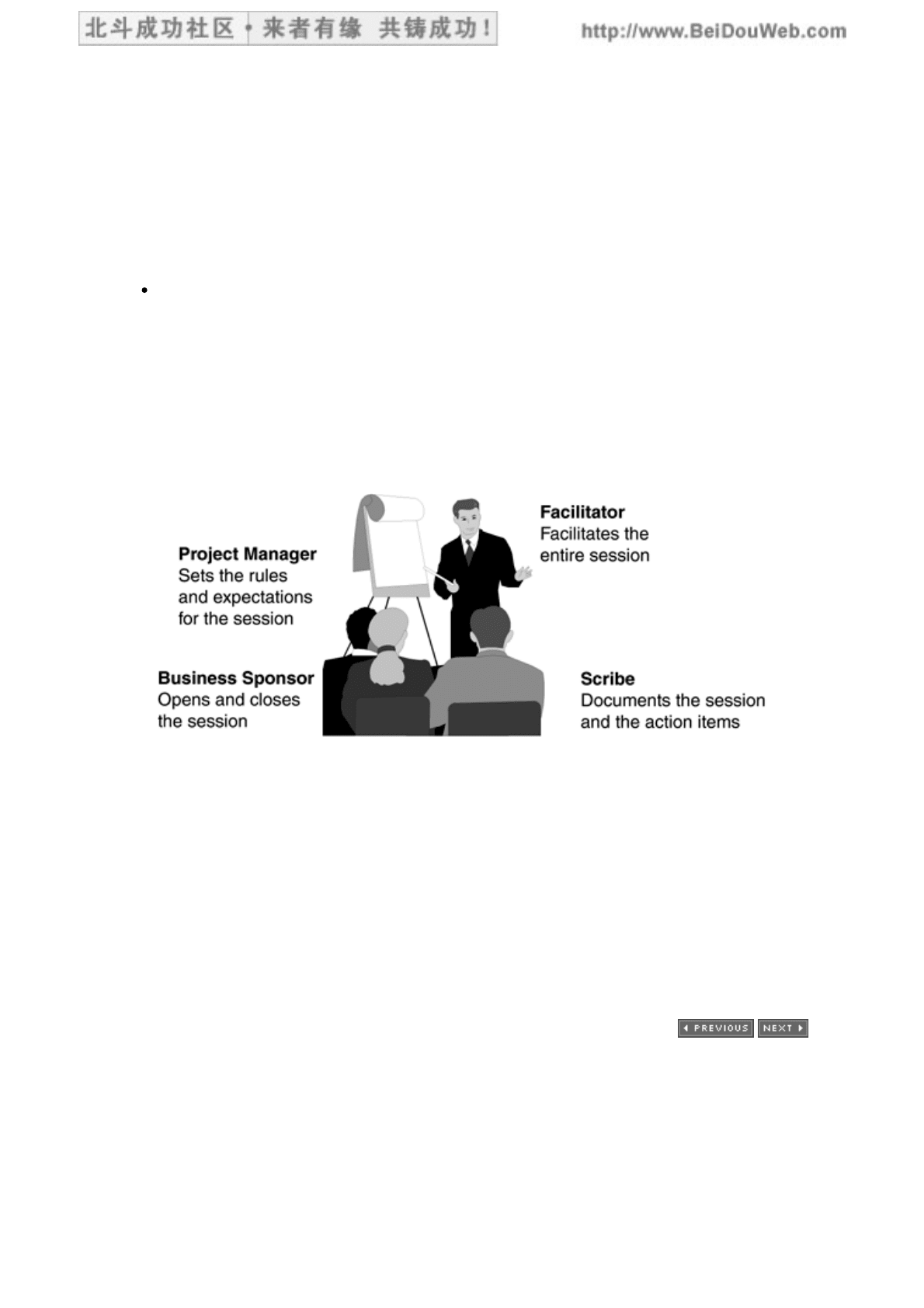Moss L.T., Atre S. Business intelligence roadmap: The complete project lifecycle for decision-support applications
Подождите немного. Документ загружается.


New requirements must be triaged and prioritized; scope is strictly controlled
and kept small for every BI release.
Small errors or defects are addressed under strict change-control procedures
during the development of the release.
Large errors or defects are deferred to another release by removing the
function or data associated with the problem.
When deferred functions or data are implemented in a future release, business
management must prioritize the sequence of delivering the deferred
requirements.
If time is a critical project constraint, using the release
concept to deliver a partial application of high quality is
much better than delivering a completed application with
many defects and dirty data.
[ Team LiB ]
北斗成功社区 BeiDouWeb.com 教育音视频/电子书/实用资料文档/励志音乐影视 仅供免费试用/版权原著所有
451/631

[ Team LiB ]
Post-Implementation Reviews
A post-implementation review should be conducted after every BI project, regardless
of whether the BI application runs perfectly or has problems. It is imperative to learn
from each project in order to improve the quality as well as the speed of the
development process for future BI applications.
A post-implementation review session is also an excellent forum for IT managers and
business executives to become comfortable with the dynamic development process
and the release concept of BI applications. In addition, the review session is an ideal
venue for sharing the lessons learned with other project teams as well as with other
business managers in the organization. This goes a long way toward making the
necessary culture shift more natural and acceptable.
Topics to be reviewed can include schedule, budget, satisfaction, scope, negotiation
skills, staffing, skills and training, project planning and reporting, and development
approach (methodology), as well as contractors, consultants, and vendors or any
other general topic. Table 16.2 lists some suggested review questions for those
topics.
Table 16.2. Suggested Post-Implementation Review Questions
Post-Implementation Review Topics
Schedule
Did the project come in on time?
If not, why not? Was the schedule realistic? What slowed us down?
How can we prevent delays next time?
Budget
Did the project come in within budget?
If not, why not? Was the budget realistic?
How can we prevent cost overruns next time?
Satisfaction
Are we achieving the benefits we expected in terms of the return on
investment (ROI)?
Are the online analytical processing (OLAP) tool and other access and analysis
tools satisfying the analytical business needs?
北斗成功社区 BeiDouWeb.com 教育音视频/电子书/实用资料文档/励志音乐影视 仅供免费试用/版权原著所有
452/631

Scope
Were scope changes requested during the project? Were scope changes made
as a result of prototyping?
Was the impact analyzed and measured? What was the impact? Could it have
been avoided?
What did we learn about scope changes and the existing change-control
procedure?
Negotiation Skills
Were all requested functions and data implemented? Did the scope have to be
renegotiated?
Did other project constraints have to be renegotiated (time, quality, resources,
budget)?
Was the renegotiating process painless, or did it create friction between the
business people and IT staff?
What needs to be done to improve the renegotiating process?
Staffing
Did we lose any key people during the project?
Why did they leave? What was the impact of their departure?
How can we avoid that type of loss in the future?
Was the core team staffed properly? Were there too few or too many team
members?
Were the roles and responsibilities assigned appropriately?
Did the team members work well together? Was there friction? If so, what was
the reason for the friction?
How can we increase team spirit and team morale in the future?
Skills and Training
Were the skills of the team members sufficient? Was "just enough and just in
time" training provided or was "emergency training" required during the
project?
Was the provided training effective? What should be done differently next
time?
北斗成功社区 BeiDouWeb.com 教育音视频/电子书/实用资料文档/励志音乐影视 仅供免费试用/版权原著所有
453/631

Project Planning and Reporting
Did the team report "actual time" truthfully? If not, why not?
Were the activities estimated correctly? If not, do we know why they were
overestimated or underestimated?
Does our procedure for tracking time and reporting project status work? How
can we improve it?
What other lessons did we learn about project planning, tracking, and
reporting?
Development Approach
Did we select the appropriate steps, activities, and tasks from Business
Intelligence Roadmap? If not, why not?
Were important tasks left out? Were unnecessary tasks included?
Did we use the operational prototype approach for application development?
Did it work? What were the benefits?
Contractors, Consultants, and Vendors
Did we effectively use outside consultants or contractors?
Did they transfer their knowledge to our staff?
What lessons did we learn from negotiating with vendors?
Did the vendors follow the rules or try to go around them? How can we control
that situation in the future?
General
Was communication effective?
Were business people available when needed?
What other lessons did we learn? What should be done differently next time?
Organizing a Post-Implementation Review
Consider the following items when organizing a project review.
How to prepare for the review: The project manager has to take some time
to prepare for the review by:
- Examining the issues log to see which issues were effectively resolved
and which were not
- Assessing the change-control procedure for its effectiveness
北斗成功社区 BeiDouWeb.com 教育音视频/电子书/实用资料文档/励志音乐影视 仅供免费试用/版权原著所有
454/631

- Reviewing the project plan to determine whether all the appropriate
tasks were included
- Studying the estimated and actual task completion times on the project
plan to determine which tasks were underestimated and which were
overestimated
- Noting any problems with the technology platform, such as problems
with tools or their vendors, hardware, network, and so on
- Reviewing the budget to see if the actual expenditures came close to the
estimated ones
- Assessing the effectiveness of the training sessions
All of these items are potential topics for discussion at the review.
When to schedule the review: It is advisable to wait for two months after
going into production before holding a formal review of the BI application. This
will give the project team time to iron out all the glitches that are common
during the first few weeks after "going live." It will also give the project
manager and the business sponsor time to:
- Review the project charter, project plan, project reports, project
activities, and budget
- Collect information and metrics about the usage of the BI application,
the BI target databases, and the meta data repository
- Organize the meeting
Where to hold the review: The review session should be held offsite. Pagers
and cell phones should be used for emergencies only; they should not ring
during the session. The room should be set up as a conference room supplied
with:
- Several flipcharts
- An overhead or data projector
- Markers and masking tape
- Two laptops, one for the facilitator and one for the scribe
- Coffee—lots of strong coffee
How long the review should last: A well-organized, thorough review usually
lasts two full days, especially for the first release of a new BI application.
However, if time is in short supply, or if the release was small in scope and
effort with no significant hurdles, one full day could be scheduled with the
option of a follow-up session within two weeks if necessary.
Who should attend the review: All team members from the core team and
the extended team should be invited to participate in the review. They must be
prepared to contribute. That means they must review the agenda and prepare
北斗成功社区 BeiDouWeb.com 教育音视频/电子书/实用资料文档/励志音乐影视 仅供免费试用/版权原著所有
455/631

to discuss the topics listed on it. They must also review any documents sent to
them ahead of time and be prepared to discuss them. In short, every project
team member should be an active participant!
What to discuss during the review: A preliminary agenda should be
published about four weeks before the scheduled review session.
- The preliminary agenda should list all topics, including introduction and
wrap-up, with estimated time allocations for each topic.
- The time estimates must take into account the complexity of the topic
and the number of people participating.
- Everyone who is invited should be given the opportunity to add to the
agenda and submit any pertinent documents to be reviewed.
- About two weeks before the review session, the final agenda and all
documents should be sent to the attendees.
Post-Implementation Review Session Flow
Post-implementation reviews are very structured and follow a prescribed procedure
by which the group must abide. Figure 16.2 illustrates the typical flow of a review
session.
Figure 16.2. Post-Implementation Review Session Flow
Certain people conduct certain parts of the meeting (Figure 16.3), as described
briefly below.
The business sponsor should open the meeting and give an introduction before
turning the meeting over to the project manager. At the end of the session, the
business sponsor should close the meeting.
The project manager should discuss the flow, the rules, and the expectations of
the review, then turn the meeting over to a skilled facilitator.
The facilitator should lead the group through the topics on the agenda. The
facilitator's responsibilities include the following:
- Asking the person who owns a topic on the agenda to introduce the
topic
北斗成功社区 BeiDouWeb.com 教育音视频/电子书/实用资料文档/励志音乐影视 仅供免费试用/版权原著所有
456/631

- Soliciting comments and feedback from the other participants
- Assuring that the meeting does not get bogged down on any given topic
- Monitoring the allocated time for each topic and interrupting the
discussion when the time limit has been reached, at which point the
facilitator must temporarily turn the meeting over to the project manager
for a decision (see below)
The "scribe" is a person who was not involved with the BI project. The main
purpose for having a third-party scribe is to have a knowledgeable but neutral
note taker who:
- Documents the highlights of all conversations and comments
- Documents identified action items and to whom they were assigned
Figure 16.3. Conducting a Post-Implementation Review
If more time is required for a topic, the project manager and the business sponsor
must decide whether to continue the discussion beyond its allocated time or to cut
the topic short and discuss the remaining topics on the agenda. In either case, a
second meeting has to be called to either finish the discussion on the interrupted
topic or to cover the other topics that had to be dropped from the agenda during this
meeting.
At the end of the review session, all action items are reviewed, and the person to
whom an action item was assigned estimates a completion date or a reply date (the
date on which an estimate will be provided for the effort to complete the action
item). The group must decide who will get the task to follow up on the action items
and whether another meeting is necessary (and if so, how soon).
[ Team LiB ]
北斗成功社区 BeiDouWeb.com 教育音视频/电子书/实用资料文档/励志音乐影视 仅供免费试用/版权原著所有
457/631

[ Team LiB ]
Release Evaluation Activities
The activities for release evaluation do not need to be performed linearly. Figure
16.4 indicates which activities can be performed concurrently. The list below briefly
describes the activities associated with Step 16, Release Evaluation.
Prepare for the post-implementation review.
All aspects of the completed project are subject to review. That includes
strategies, plans, documents, designs, deliverables, procedures, and
infrastructure. The goal of the review is to get an accounting of what worked
well on the project and what did not, and to produce a list of action items to
implement changes to the development process.
1.
Organize the post-implementation review meeting.
Prepare a list of discussion topics and an agenda, and distribute them to all
attendees. The agenda should list the date, time, place, attendees, and topics
to be discussed. Appoint a facilitator and scribe, and find a venue for the
session.
2.
Conduct the post-implementation review meeting.
The business sponsor should open and close the review session. The project
manager should explain the agenda, the rules of the meeting, and the roles of
the facilitator and the scribe. The scribe should document all discussion points,
which must be reviewed at the end of the session. Assign any action items that
come up during the session.
3.
Follow up on the post-implementation review.
Action items are usually assigned to the attendees, but they can occasionally be
delegated to staff other than the attendees. In either case, someone must
follow up on the action items to ensure that they are performed. Action items
can include updating the standards or the methodology, revising estimating
guidelines, seeking resolution to a business problem, or repairing an urgent
problem that cannot wait for the next release. Prioritize functions or data
dropped from the scope due to constraints on the BI project so you can bundle
them with future releases.
4.
Figure 16.4. Release Evaluation Activities
北斗成功社区 BeiDouWeb.com 教育音视频/电子书/实用资料文档/励志音乐影视 仅供免费试用/版权原著所有
458/631

[ Team LiB ]
北斗成功社区 BeiDouWeb.com 教育音视频/电子书/实用资料文档/励志音乐影视 仅供免费试用/版权原著所有
459/631

[ Team LiB ]
Deliverables Resulting from These Activities
Post-implementation review agenda
The agenda is the "program" for the review session. It lists the date, time, and
place of the meeting; invited attendees; topics for review; and questions to be
discussed.
1.
Post-implementation review meeting minutes
This short document highlights all the discussions, suggestions, and resolutions
regarding the topics and questions on the agenda.
2.
Action item list
The action item list briefly describes each action item, noting to whom an action
item was assigned and showing a projected completion date (or response date)
for each action item.
3.
[ Team LiB ]
北斗成功社区 BeiDouWeb.com 教育音视频/电子书/实用资料文档/励志音乐影视 仅供免费试用/版权原著所有
460/631
